PBIO 109 - 2014
incompletely updated through Thursday July 3
more to do on data and images
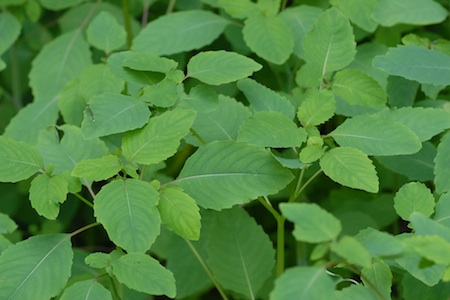
Balsaminaceae
~alternate simple leaves
~glaucous and glabrous
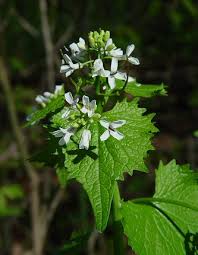

Brassicaceae (Cruciferae)
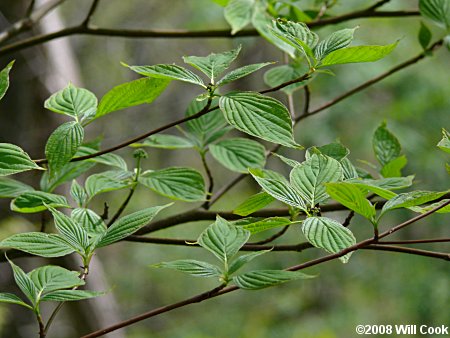
Cornaceae
~arcuate secondary veins, tertiary veins perpendicular to midrib
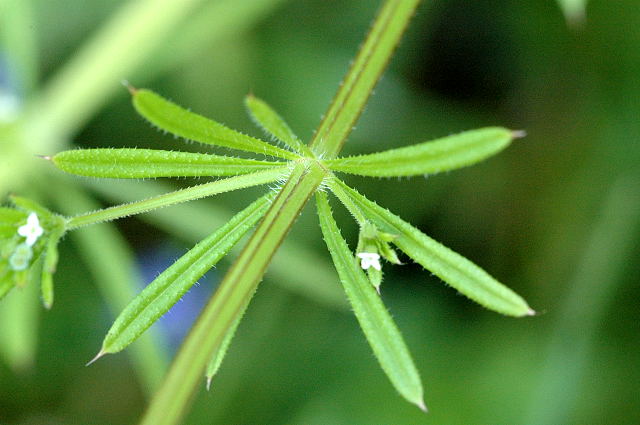
Rubiaceae
whorled leaves, climbs over other plants with stiff, downward-pointing hairs
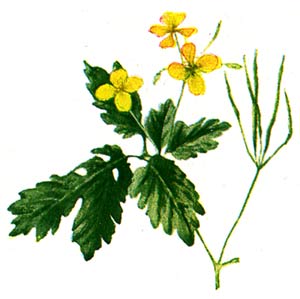
Papaveraceae
~colored latex (only Papveraceae have colored latex in Vermont)
~alternate, pinnately compound leaves
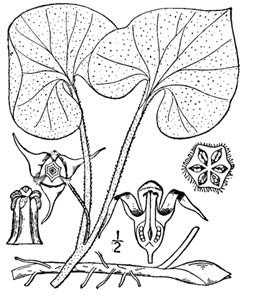
Aristolochiaceae
~essential oils of the magnoliids
~flowers designed for carrion-beetle pollination
~seeds with arils for ant dispersal

Araceae
~ one palmately compound leaf
~ inflorescence with a bract enclosing the flowers
~ plants male when young, female when older
~pollinated by small flies (fungus gnats, NOT carrion flies!_
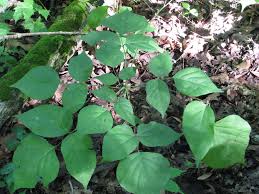
woodland tick-trefoil
Fabaceae (Leguminosae)
~alternate. compound leaves with stipules
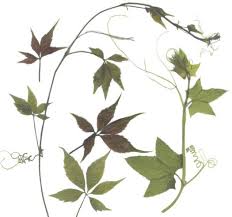
Vitaceae
~ tendrils are transformed inflorescences at 180˚ from a leaf base.
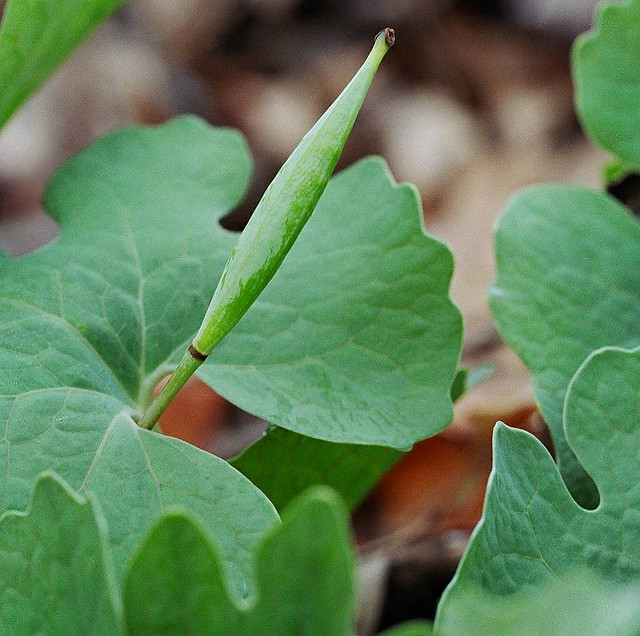
colored (orange-red) latex, fruit with arils dispersed by ants
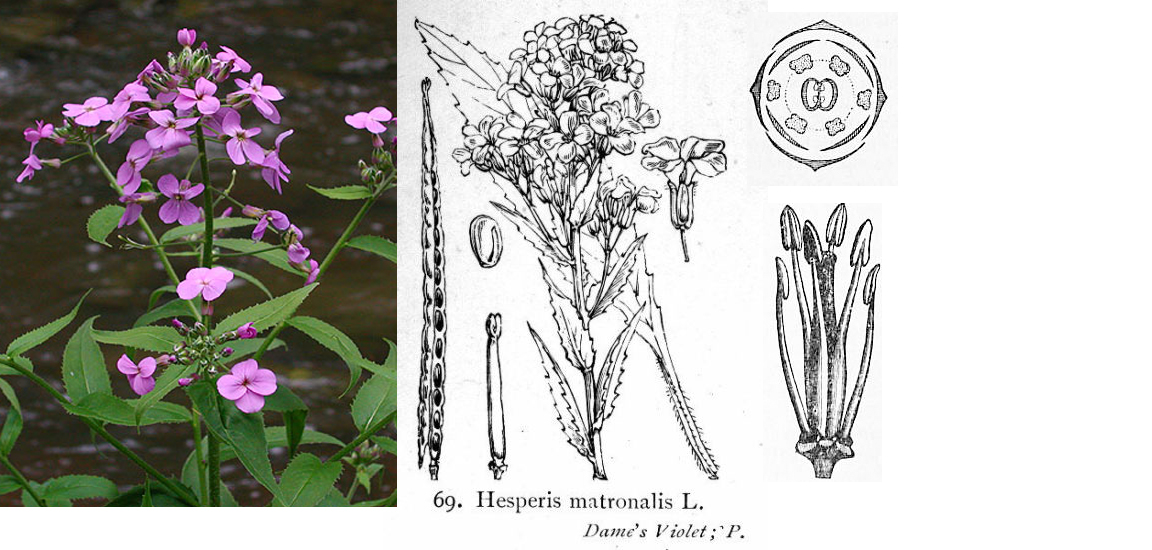
Brassicaceae (Cruciferae)
~radially symmetrical corolla of four separate petals
(perhaps a bit bilateral)

Caprifoliaceae
~connate corolla with bilateral symmetry
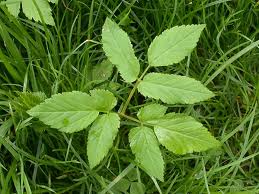

Apiaceae (Umbelliferae)
~five separate petals, radial symmetry, sepals five, almost reduced
~umbel inflorescence
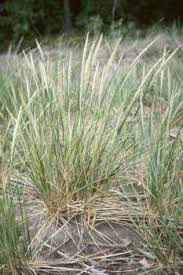
Poaceae (Gramineae)
~stolons!
~Champlain Sea remnant, endangered in Vermont


Fabaceae (Leguminosae)
perianth----
~calyx of 5 sepals, bilaterally symmetrical, connate
~corolla bilaterally symmetrical, of five petals,
1 banner (separate)
2 wings (separate)
2 keels (fused)
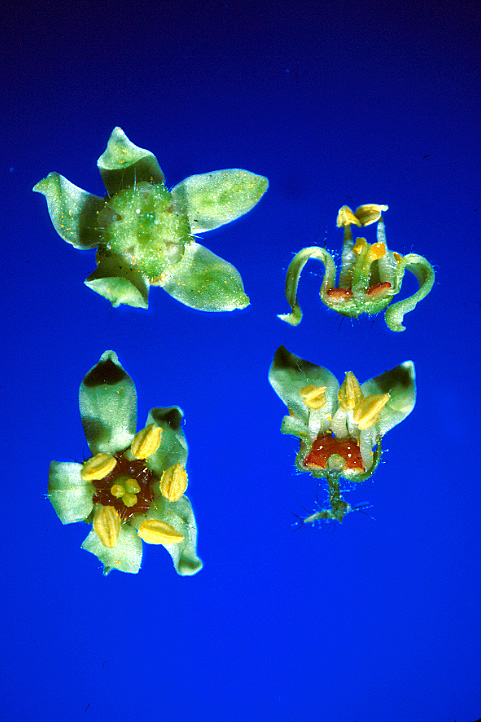
Anacardiaceae
~DISC!
~separate stamen-bearing and pistil-bearing plants
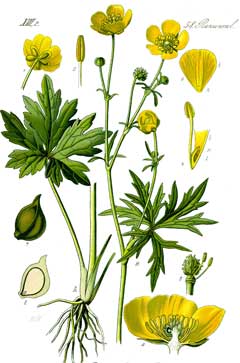
Ranunculaceae
FAMILY:
palmate leaf design
many stamens
no fusion in flower

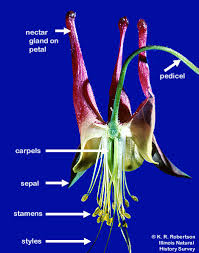
Ranunculaceae
FAMILY:
palmate leaf design
many stamens
no fusion in flower
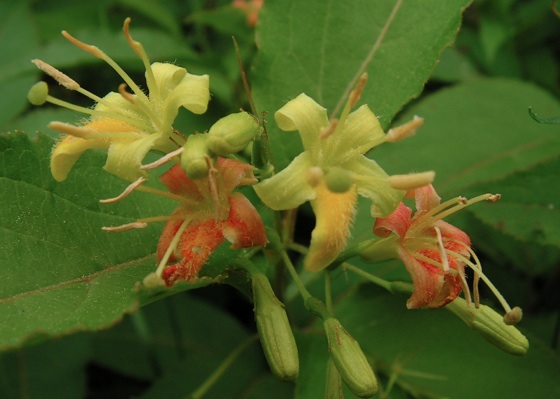
Caprifoliaceae
FAMILY:
corolla fused
corolla symmetry bilateral
stamens = petals

Rubiaceae
HETEROSTYLY!
FAMILY:
corolla fused
corolla symmetry radial
stamen = petals
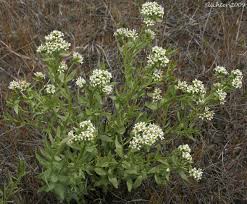

SANTALACEAE
~stamens equal and opposite the tepals
~parasitic
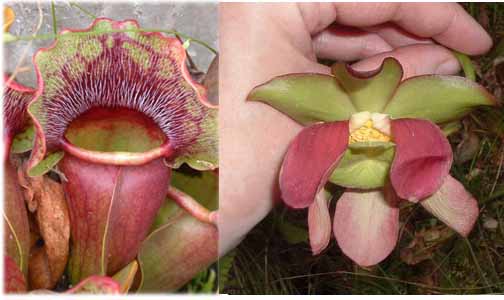
Sarraceniaceae
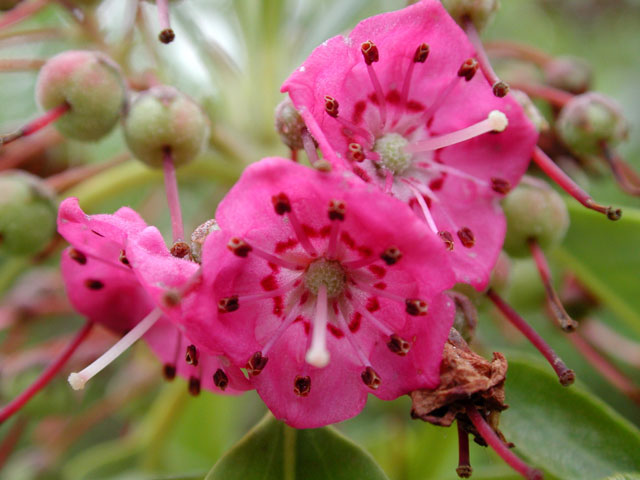
Ericaceae
FAMILY
~connate corolla
~stamens teice the petals
~stamens porocidal


PRIMULACEAE
~marginal vein conncts tips of secondaries
~stamens connate (the filmanets)
~stamens equal and opposite the petals
~superior ovary
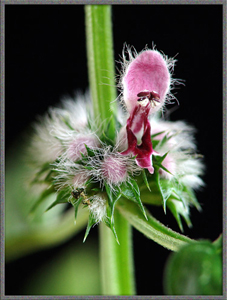
Lamiaceae (Labiatae)
FAMILY
square stems
opposite leaves
connate bilateral corolla
stamens two or four (fewer than sepals)
style forked
ovary superior
fruit of four small nuts

Iridaceae
MONOCOT FEATURES
parallel, close-set secondaries
two whorls of three tepals
FAMILY
stamens three
ovary inferior
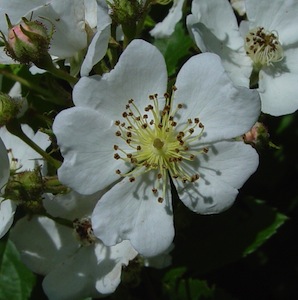

Rosaceae
KEY CHARACTERS FOR FAMILY
stipules (right imagE)
many stamens
hypanthium
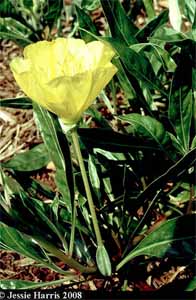
Onagraceae
~parts in fours
~hypanthium
~inferior ovary
Rosaceae
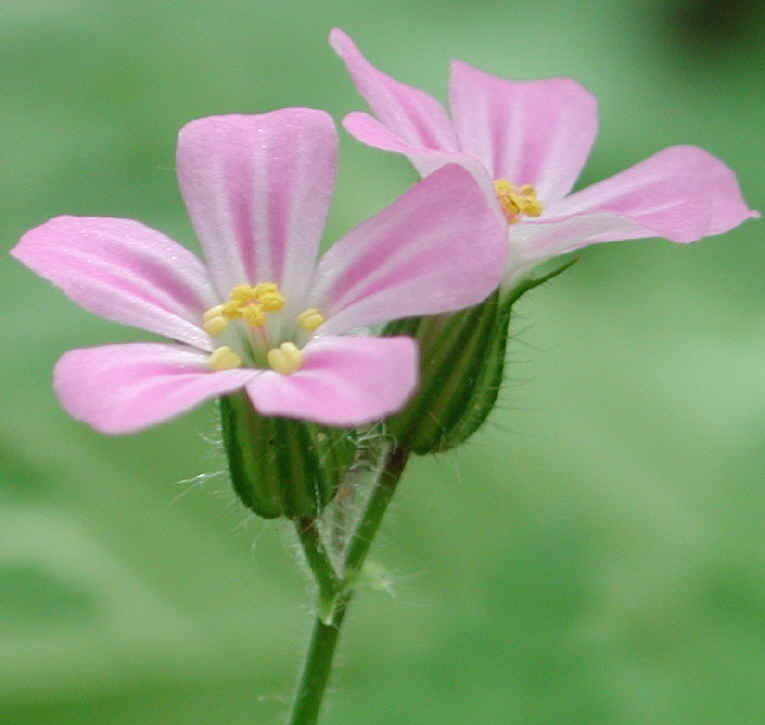
Herb Robert
Geraniaceae
~separate petals
~radial symmetry
~stamens twice the petals
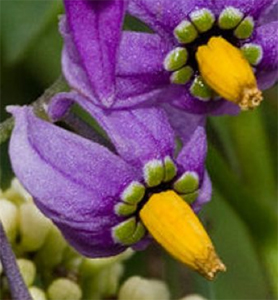
Solanaceae
~alternate leaves
~radial symmetry
~petals fused
~stamens adnate to the petals
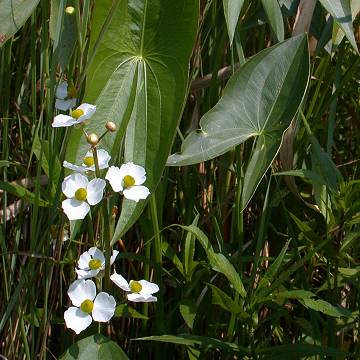
Alismataceae
~leaves with arcuate secondaries and well-developed tertiaries
~flower parts in threes (number of whorls unclear)
~stamens many
~the genus is monoecious, not the family
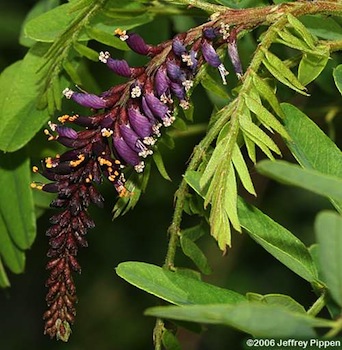
Fabaceae (Leguminosae)
~alternate,
~pinnately compound leaves
~stipules
~banner
(no wings or keels)
~10 stamens
~one simple pistil
33. Zanthoxylum, prickly ash
Rutaceae

34. Staphylea, bladdernut
Staphylaeaceae

35. Taenidia, yellow pimpernel
Apiaceae (Umbelliferae)
threatened species, Vermont rules
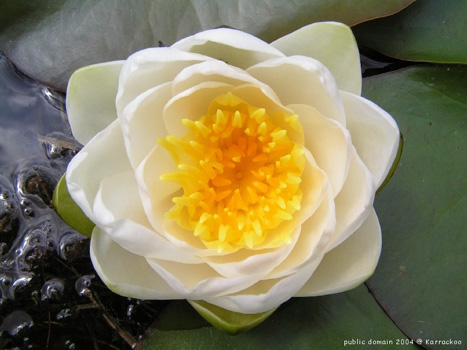
Nymphaeaceae
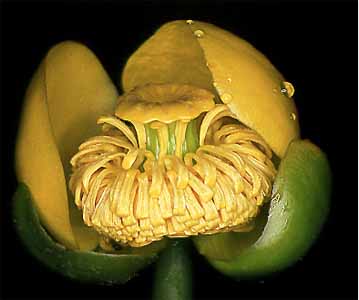
Nymphaeaceae

Butomaceae
~two whorls of three tepals
~nine stamens
~the protandrous flowers here are in their second, pistillate phase

Lythraceae
~hypanthium without stamens
~separate petals
~stamens twice the petals
~tristyly (heterostyly with three forms)
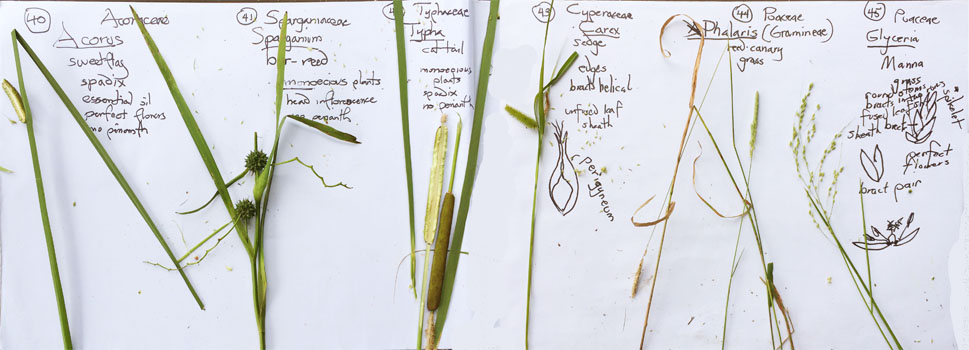
Acoraceae
41. Sparganium, bur-reed
Sparganiaceae
42. Typha, cattail
Typhaceae
43. Carex, sedge
Cyperaceae
44. Phalaris, reed-canary grass
Poaceae(Gramineae)
45. Glyceria, manna grass
Poaceae (Gramineae)

Apocynaceae
~opposite laves
~latex
~two separate ovaries
~connate corolla
~stamens = petals
~stamens adnate to petals
THE GENUS HAS
~corona (a fancy disk)
~pollen in pollinia connected by translators to a bead


Asteraceae (Compositae)
~connate corolla
~inferior ovary
~two-carpellate
~five connate anthers
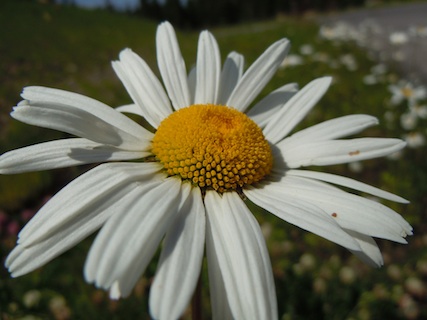
Asteraceae (Compositae)
~white ray flowers(symmetry bilateral)
~yellow disk flowers (symmetry radial)